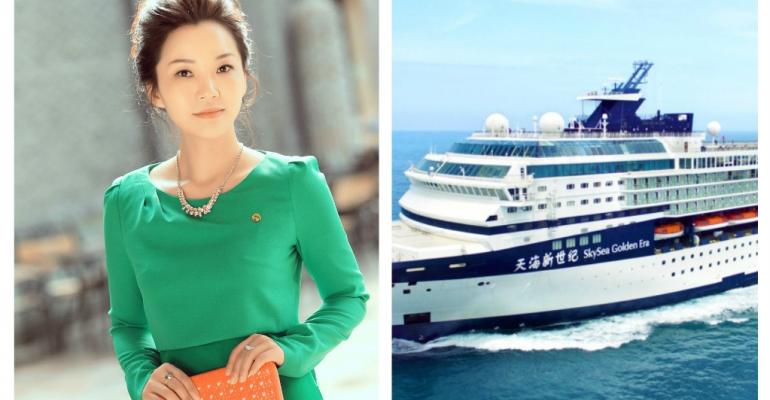Talking to Seatrade Cruise News, Xu said SkySea’s demographics have been changing from ‘mostly a generation of elders to a relatively younger one.’
The average age for the brand’s one ship, SkySea Golden Era, this summer was 35, she confirmed.
Since mid-September, the company has allowed passengers to use Alipay on their mobile device for purchases across most of the ship and this has attracted more younger cruisers to spend, she remarked.
Increasing the market share and enhancing the brand awareness of SkySea in China have become priorities, with Ken Muscat joining SkySea as ceo at the start of this year.
Muscat who is a speaker at Seatrade Cruise Asia Pacific 2017, taking place next week in Baoshan, has been focussing on a new branding that will ‘bring something cool, something smart and contemporary to differentiate SkySea from other international cruise brands,’ according to Xu.
Xu points out that SkySea, which began operations in 2015, rides on sound backing from Ctrip and Royal Caribbean, ‘two giant business players’.
The line’s product design and operation are kept flexible. Ctrip brings its internet thinking and ‘brand promotion through scientific and technological innovation’, she remarked.
Ctrip’s travel management, packages, reservation and ticketing services helps to optimize online and offline channels. They are also able to garner talent for the cruise arm and strengthen government relations.
Xu revealed that Skysea is seeing increased onboard spending with a growing number of guests going to one of the four speciality non-inclusive restaurants, spa, and make duty free purchases onboard. Shopping is always a popular activity, she added.
She says that typically, Chinese cruise passengers travel as a family of four to six.
They are ‘destination-oriented’ and Xu sees ‘word of mouth’ and the sharing of passenger-experience as important for growing brand awareness.
‘Passengers welcome WiFi, tailor-made themes, and shorex to be organized for them.’
When Skysea began operations out of Shanghai in May 2015, more than 70% of SkySea passengers were mostly from Eastern China. Xu describes Shanghai as one of the most mature and developed sourcing markets with full governmental support.
As the market matures, there are more guests now sourced from second and third tier cities in central and western regions such as Guizhou, Chongqing, Si Chuan Province and Qing Hai Province.
Skysea has multi-home port operations out of Shanghai, Xiamen, Qingdao, Zhoushan and Shenzhen in 2017.
This year also marked the cruise line’s first visit to southeast Asia when there were June and July sailings from Xiamen to destinations such as Manila and Boracay.
In 2018, SkySea Golden Era will sail from five homeports, namely Shanghai, Xiamen, Keelung, Qingdao and Shenzhen. Xu says there are also more homeports to come.
Also on the cards is longer shore excursion time at destinations, with options to have a night on the town before getting back to the vessel by 10pm.
Xu concluded that market penetration in China is increasing and for SkySea, ‘building a fleet is our goal and we are working on it.’
Copyright © 2024. All rights reserved. Seatrade, a trading name of Informa Markets (UK) Limited. Add Seatrade Cruise News to your Google News feed.


